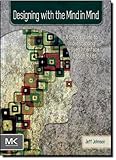Less generic that what has been listed in this article since it focuses more on user interfaces, it's a great overview of basic design principles, with clever illustrated examples.
http://www.amazon.com/Designing-Mind-Simple-Understanding-In...
First – the photo that is used as "evidence" caught my eye quickly because it is clearly poorly processed/improperly exposed. There is no black point and that's a bad thing for the image; which leads me to say – you can't make the sweeping generalization that black is always bad. It's not – and the work of one pop art painter and a bad bit of photography isn't substantiated proof.
If you want to actually make something meaningful out of this, you'd actually push hard on the idea that too much contrast is a bad thing. Black isn't bad. Heavy contrast can be. Instead, get down to the root reasons that we have issues with contrast – in short, we're wired to notice differences in color or brightness than we are for absolute values of color or brightness. As such, it's not about one color, it's about the contrast.
Check out Jeff Johnson's Designing with the Mind in Mind: http://www.amazon.com/Designing-Mind-Simple-Understanding-In... or Colin Ware's Visual Thinking for Design: http://www.amazon.com/Visual-Thinking-Kaufmann-Interactive-T...
Both of those do a much better job at explaining the hows and whys of the average person's visual perception.
— Start by reading "Designing with the mind in mind" by Jeff Johnson (http://www.amazon.com/Designing-Mind-Simple-Understanding-In...)
— Now you understand that UX design is actually cognitive psychology + sociology. Of course, most cognitive psychology/sociology books will only be slightly relevant to UX design. Here's a short selection to get you started:
— Don Norman, Design of Everyday Objects
— Don Norman, Emotional Design
— Brenda Laurel, Computers as Theater
— Kim Goodwin, Designing for the Digital Age: How to Create Human-Centered Products and Servicesa
— Bill Moggridge, Designing Interactions
Bonus:
— Raph Koster, A Theory of Fun for Game Design (meant for video game design, but has a lot of lessons that can be applied to good UX)
For UI design, I'd also heavily recommend "Semiology of Graphics: Diagrams, Networks, Maps" by Jacques Bertin, and anything by Tufte. These titles are more about data visualization, but most UIs need a way to visualize data in some shape or form.
One point that msutherl forgot in his fantastic comment is animation (as in, 2D animation). UIs are not static things, and animators have spent decades understanding how we react emotionally to animations (Good introductory read: http://labs.oracle.com/techrep/1995/smli_tr-95-33.pdf). Good animation in a UI makes a whole lot of difference— Apple knows that (http://watchingapple.com/2007/06/are-apple-ui-designers-lear...).
For this, only one resource: "The Animator's Survival Kit", by Richard Williams.
- Where should I click to go to the comments page? If I have to click on the little bubble on the right of each article, it actually makes my user experience less pleasant than with the current design. (Did OP read "Don't Make Me Think"?)
- No flagging button. Did OP voluntarily omit it? If so, why? If not, where would he put it?
- The scores of the articles look likes buttons, what should I expect when I click on them?
- Knowing the number of comments of an article and its score are both important to create a certain "I need to see this" factor for readers. Putting those numbers respectively on the far left and on the far right does not help this at all.
I really agree with SeoxyS here. This redesign does not improve the current HN experience, and it actually makes it more complex by displaying the information in a way that does not look bad but does not actually help browsing the site.
I would suggest OP to think (or learn) more about UX. That's a very good thing to do on a Friday night, and even though a lot of this knowledge can come through working with a different focus (think about your user) and common sense, there are good books to get you started.[1][2]
[1]:http://www.amazon.com/Dont-Make-Me-Think-Usability/dp/032134... - I recommend this
[2]:http://www.amazon.com/Designing-Mind-Simple-Understanding-In... - Not as good, but only 200 pages, and interesting.
http://www.amazon.com/Designing-Mind-Simple-Understanding-In...


I would like to hear if you have further explanations for what is behind this. For example, I read in [2] that reading is much more complex operation for the human mind as compared to seeing or hearing because, assuming you believe in biological evolution, reading and writing came to humans only about 6000 years ago while verbal language and hearing came a few millions years back. I do sometimes find listening to Coursera videos more helpful than just reading the slides, but then feel that this is generally because the slides are often incomplete (they often do not really "say" it).
[1] Many people, especially engineers, often lack good presentation skills. I am extrapolating this to writing since that sounds natural even though I do not have not directly experienced this.
[2] http://www.amazon.com/Designing-Mind-Simple-Understanding-In...